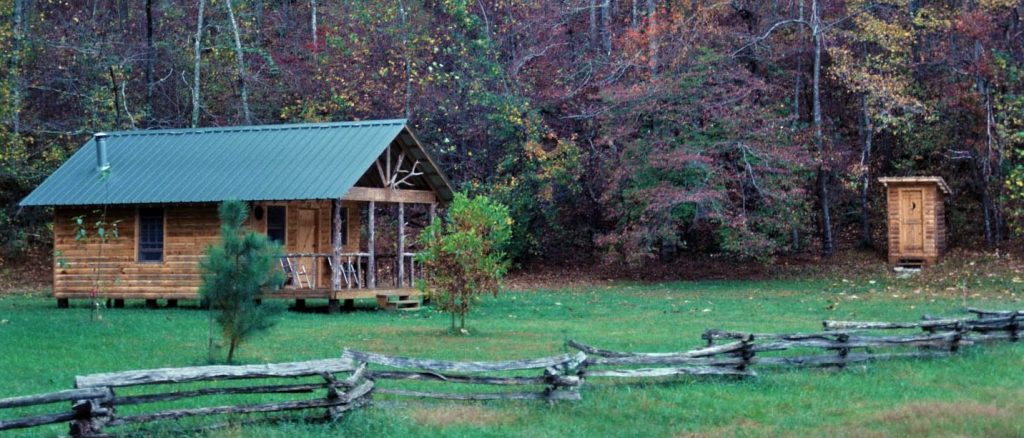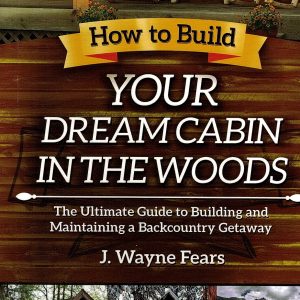Since I always took all three of my children to hunting camps with me, one of the requirements I had about joining a hunting lease was that it have a house or a cabin where friends, relatives and my children and I could stay whenever we went there to hunt or fish. However, if you own land, or you’re part of a long-term lease, you may want to build your own hunting cabin, either from your own design or, possibly, a log cabin kit. And when you are looking to build, the first place to start is with a good set of hunting cabin plans.
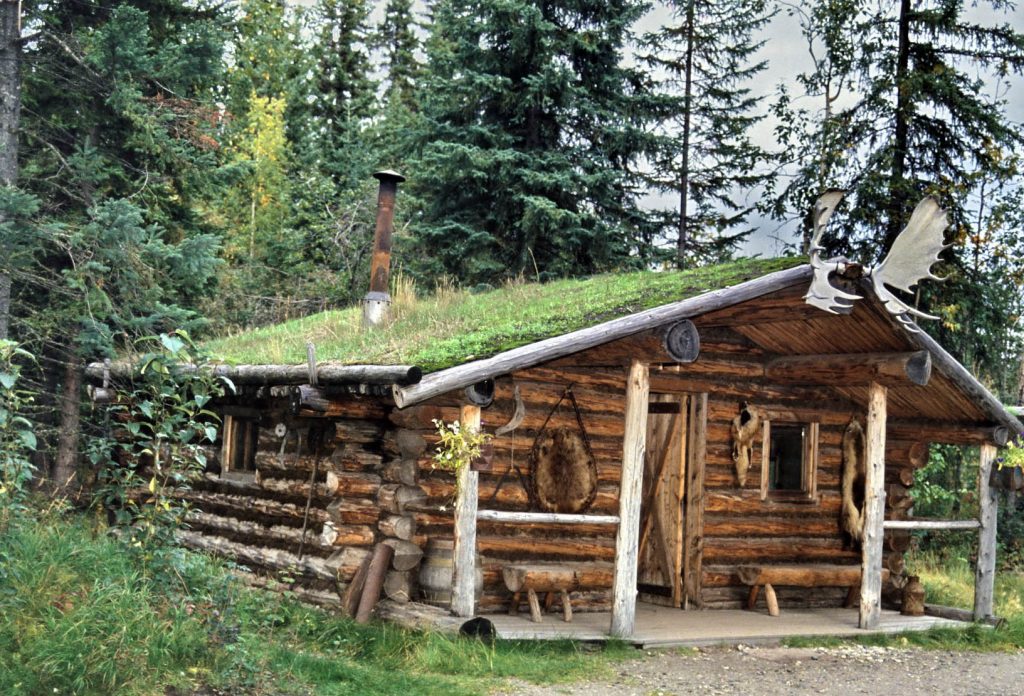
To learn the best information on how to build a hunting cabin and what to consider before starting construction, we interviewed the man who wrote the book on how to build a hunting cabin, J. Wayne Fears. Fears, a wildlife biologist and outdoor writer, has owned and operated two different hunting lodges and has supervised 220 hunting clubs for a major timber company
Why J. Wayne Fears Wanted to Build a Hunting Cabin
When Fears bought property adjoining a national forest, he knew he wanted to spend a lot of time with his children and grandchildren on the property. He longed for a place where they could camp and enjoy a true log-cabin experience. So, he decided to build a log cabin with the help of his children, neighbors and friends.
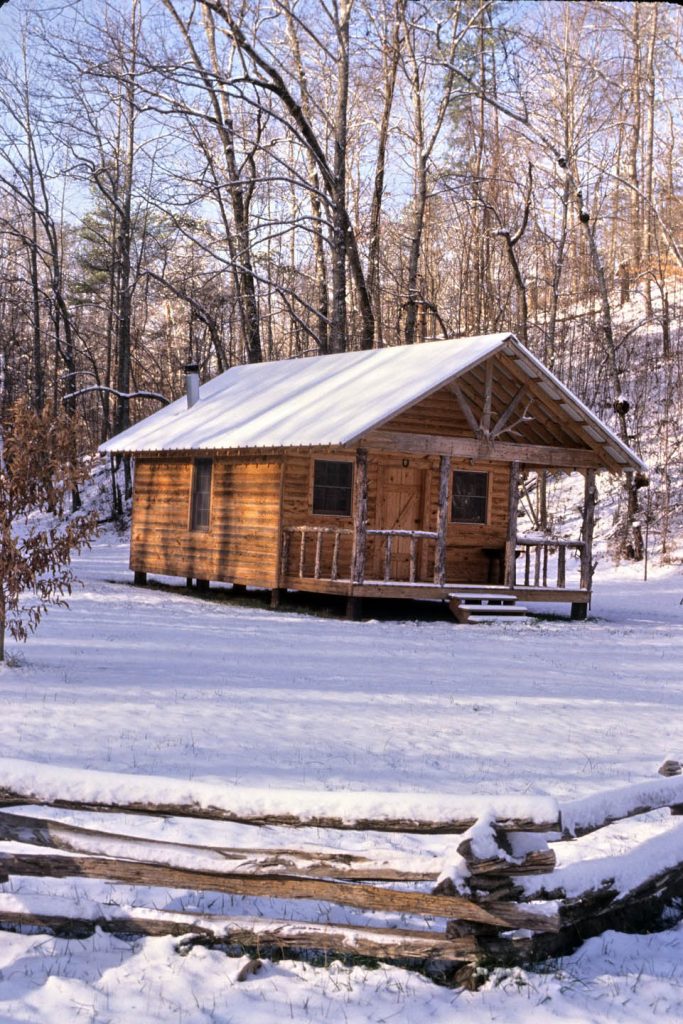
“Because I’d built log cabins in Alabama and helped build three log cabins in Alaska and one in British Columbia, I had a fairly-good idea of what was required to build a sturdy log cabin,” Fears explained. “Although plenty of good log-cabin kits are on the market, and you usually can get hunting cabin plans and floor plans from log-cabin manufacturers you can find on the Internet, I wanted to design and build a log cabin that I felt met my requirements and the needs of my family and friends. Luckily, I had grown sons with carpentry skills.”
What to Consider Before Starting to Build a Log Cabin
You must decide whether:
- to build a log cabin or a hunting cabin from your land’s timber. Not many people have timber on their property that they can cut, take the logs to the saw mill, have those logs squared-up and build a cabin from the logs they cut off their land.
- to use a hunting cabin kit. Fears suggest searching the internet for log homes and/or log-home manufacturers, looking at the log cabin plans and prices and choosing a kit that fits your budget.
- to use round logs, “D” logs that are square on the inside and round on the outside or Appalachian logs that are squared logs. That decision can help you choose the appropriate company to work with.
- to build your cabin yourself, if you have plenty of help from family and/or friends with woodworking skills. Or, you can take time off from your work to build your cabin, or you can hire someone in your local area with skills and experience building log cabins that you oversee. These options usually will cost you less money.
- to have the company you buy the log-cabin kit from send in its crew to build the cabin for you;
- to use a log-cabin kit that’s three-fourths finished, with you buying the roofing and flooring materials, floors and windows yourself; or having the company provide the finished roof materials, flooring materials, doors and windows.
“To make these decisions to determine how much time realistically you and your family are willing to invest to get the cabin built, you must consider all these items,” Fears reported. “My experience has been that if you only work on the cabin on off-days, holidays and weekends with four or five people helping you, you may spend 1-1/2 years building your cabin.”
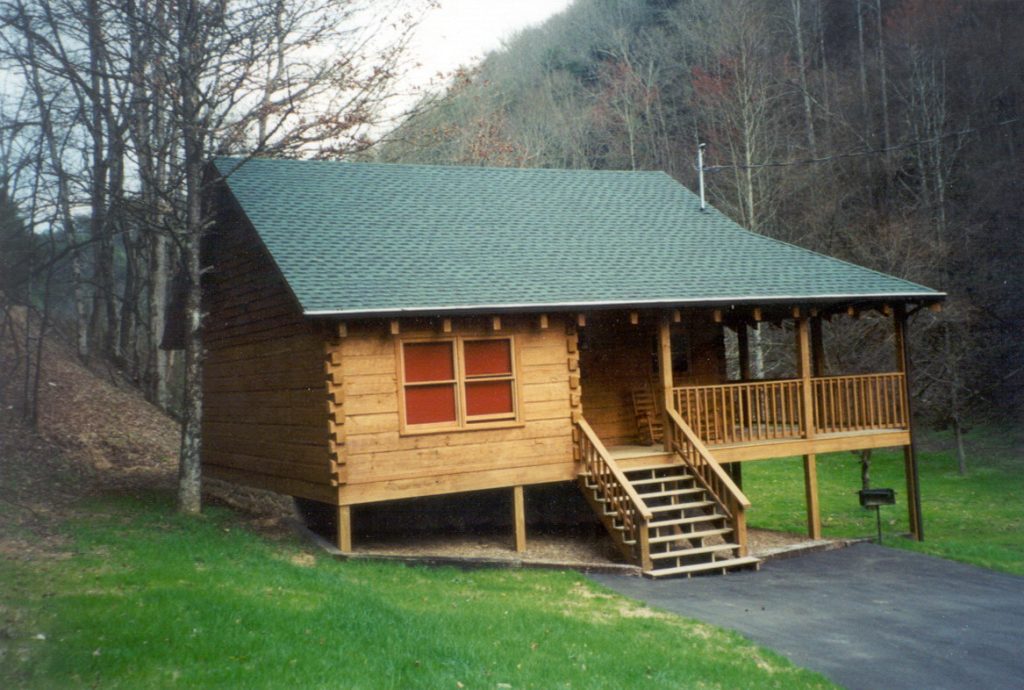
“There’s a lot of lifting involved in building a log cabin, and those people need to have some home-building experience as well as carpentry skills. You may learn that your costs to build will be almost as much as if you let the kit company crew build it for you. The company can build your log cabin in a matter of days or weeks, instead of 1-1/2 years,” Fears pointed out.
What Physical Characteristics to Assess Before Carrying Out Hunting Cabin Plans?
Fear’s property had three hollows (drainages coming off a mountain) through it, with one of the hollows containing a creek that had year-round water running through it. He wanted to have a creek nearby, so his cabin could use the water from the creek in the kitchen and for bathing. However, Fears realized that a creek wouldn’t remain at the same level all year long.
“I found an older gentleman who had lived on the land for many years before I bought it and knew the history of the creek,” Fears reported. “When I asked him about the highest water level he’d ever seen on that creek, he pointed to the belt on his blue jeans to indicate that the water had come up to waist-high. So, I knew I must build my cabin above the ground, possibly on stilts, more than waist-high to keep the cabin from getting flooded when the area had unusually large amounts of rain coming down the mountain in that little creek.”
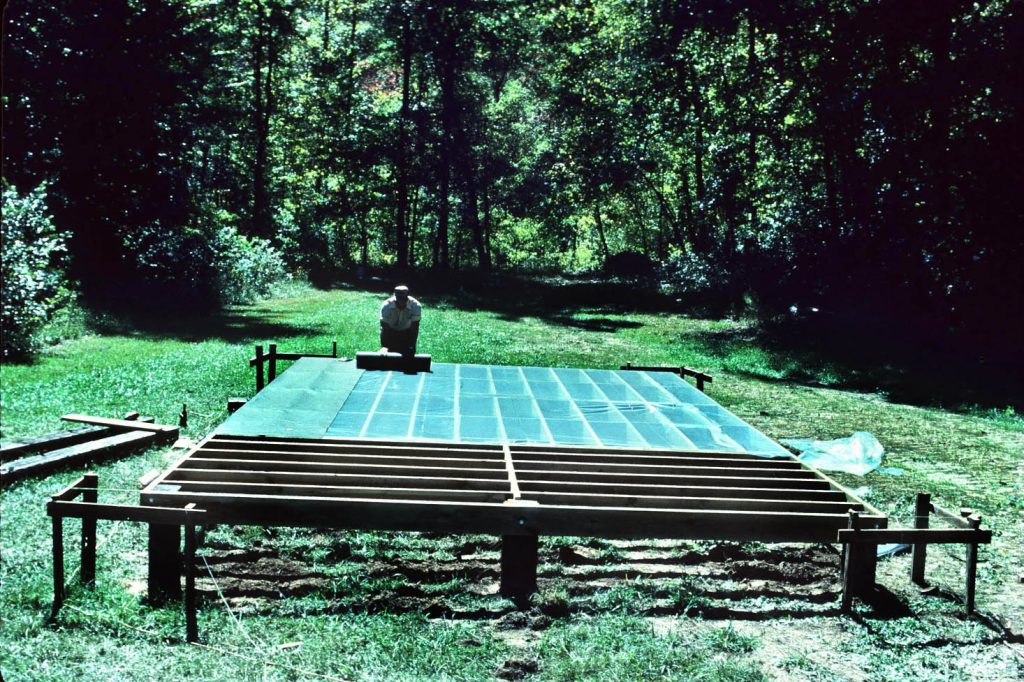
Fears required a high-enough, dry ridge, close to the creek to build an outhouse that wouldn’t leak into the water supply. He also wanted a secluded location to deter people from breaking into the cabin when no one was there. He chose a site 1-1/2 miles from any public road and in an area that either had been farmed or used for pasture with no trees on it, ensuring that during a storm, a tree wouldn’t fall on his cabin. Fears did his research before he ever put boots on the ground to start carrying out his hunting cabin ideas.
“You can save a lot of problems, headaches, disappointments and destruction, if you’ll spend the time to thoroughly research the site where you want to build a cabin, learn what type of permitting you’ll need to build the cabin and other considerations and spend time studying, planning and researching what type and size of cabin you want to build before you ever start construction,” Fears emphasized.
How Fears Built His Cabin
“My log cabin wasn’t really a log cabin,” Fears said. “Everyone thought it was a log cabin because it looked like a log cabin. My log cabin was a conventional cabin built with log siding on the outside and the inside”
Fears worked with a sawmill that cut siding to look just like a log but that is actually a board paned from a piece of two by eight-foot lumber. He installed the siding on the outside of the cabin and log siding on the inside of the cabin and it looks exactly like a log cabin. This technique allows you to not only save money but also labor.
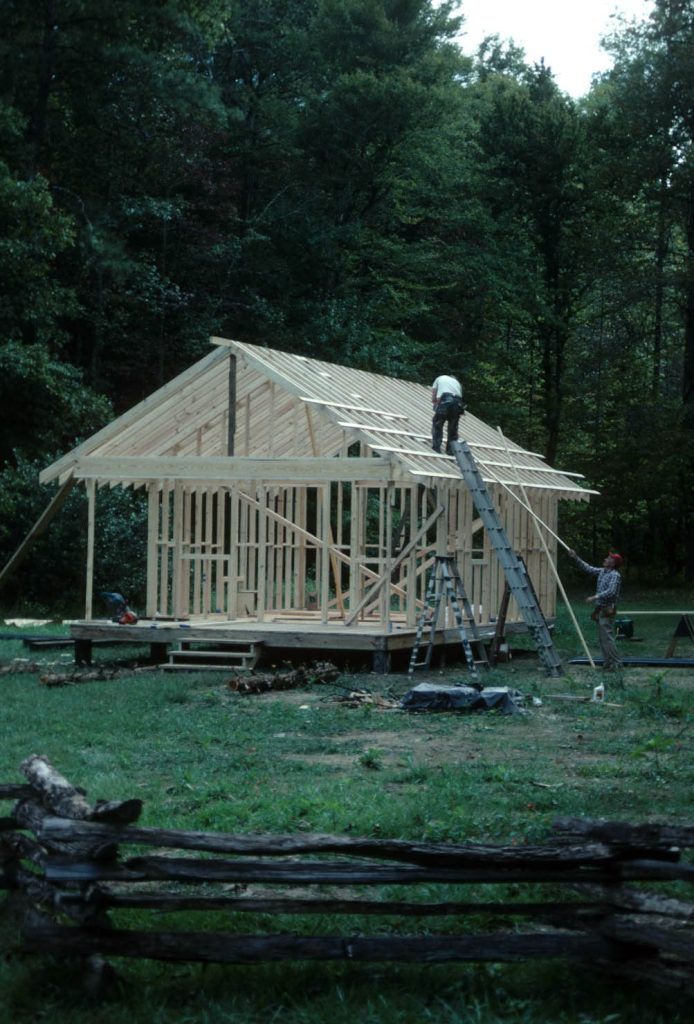
“We actually built a box shape like you’d build a shop in your backyard and then covered the exterior walls and the interior walls with log siding,” Fears pointed out. “I spent a lot of time by myself working on the parts of the cabin that I could build myself, but I also had my three boys to help. We built our cabin in about six months, working part-time when we could.”
“Anytime you’re building a cabin you really are building a box,” Fears Explained. “The first thing to consider is how many people will use that cabin, and what kind of sleeping accommodations you’ll need. In my cabin, I decided on bunk beds. So, I took a piece of graph paper and drew the size of the rooms I wanted inside my box (cabin). I wanted one room to be a sleeping room and the other room to be a great room with a kitchen, a stove, a dining area and a sitting room.”
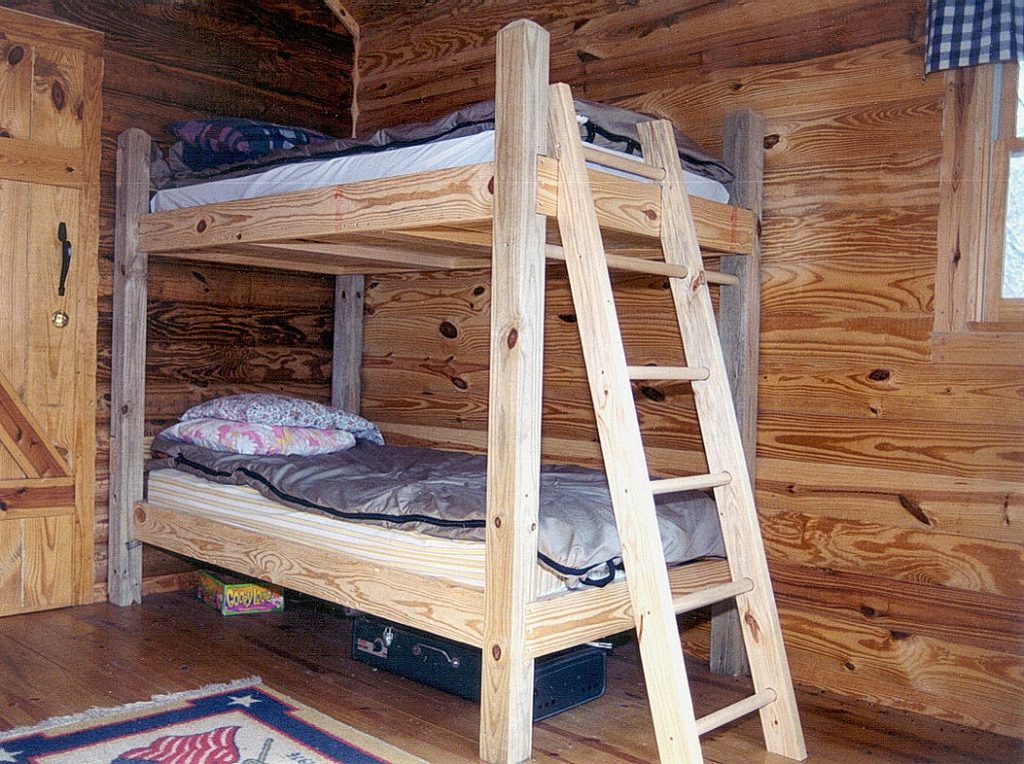
Fears shaped his kitchen like an “L” in the corner of the cabin to contain a sink, a stove and cabinets for storing food and pots and pans. He allowed enough square footage in the kitchen for two people to cook at the same time. He required a space for a table big enough to seat six or more people at mealtime, a wood stove or fireplace and enough room for people to sit and tell hunting and fishing stories.
“Another very-important part of the cabin that wasn’t really figured into the size of the cabin was a front porch,” Fears emphasized. “We did a lot of cooking on the front porch and sitting there, especially during the summertime, because the cabin wasn’t air conditioned.”
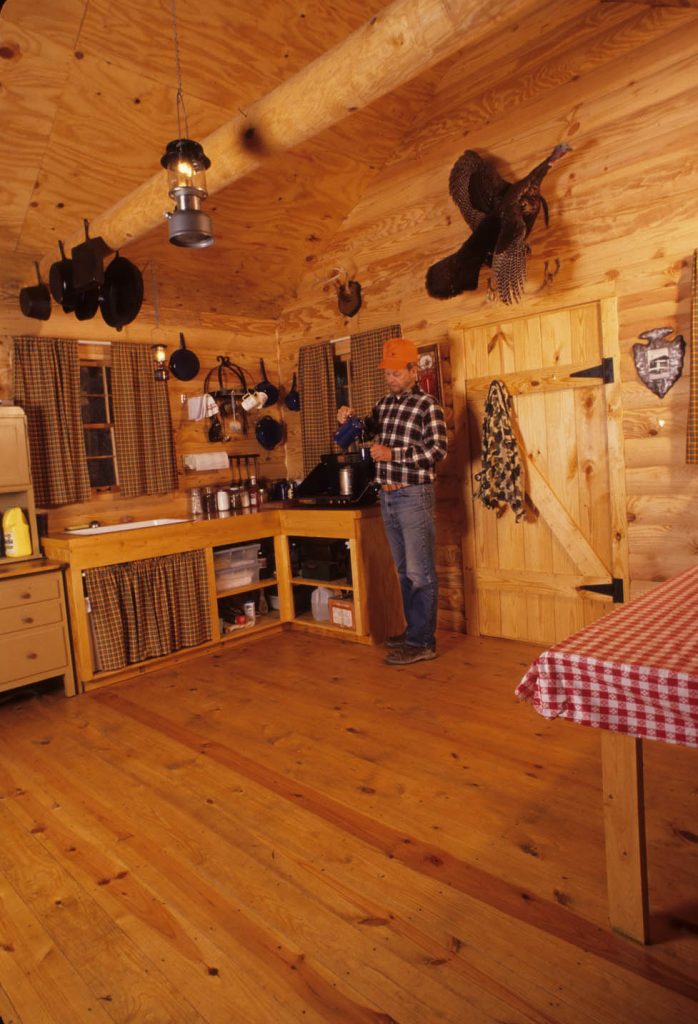
Fears pointed out that not included in his hunting cabin plans, a bathroom. “I built a first-class, nice-looking outhouse with a partial moon cut out for ventilation. I wanted my sons and grandsons to experience what I did growing up when we had to take a flashlight and walk to the outhouse on a frosty morning to go to the bathroom,” Fears said.
Fears’ cabin also didn’t have running water or electricity. Most people today would want a flush toilet. However, a well for running water would be expensive to dig, and then you’d have to hire a plumber to put all the plumbing in the cabin. To have electricity, you’d spend a good bit of money to get on a grid or have to buy a gasoline generator and the gasoline to power it. That isn’t even considering the time and expense to get the requisite permits. These modern amenities were left out of Fears, hunting cabin plans.
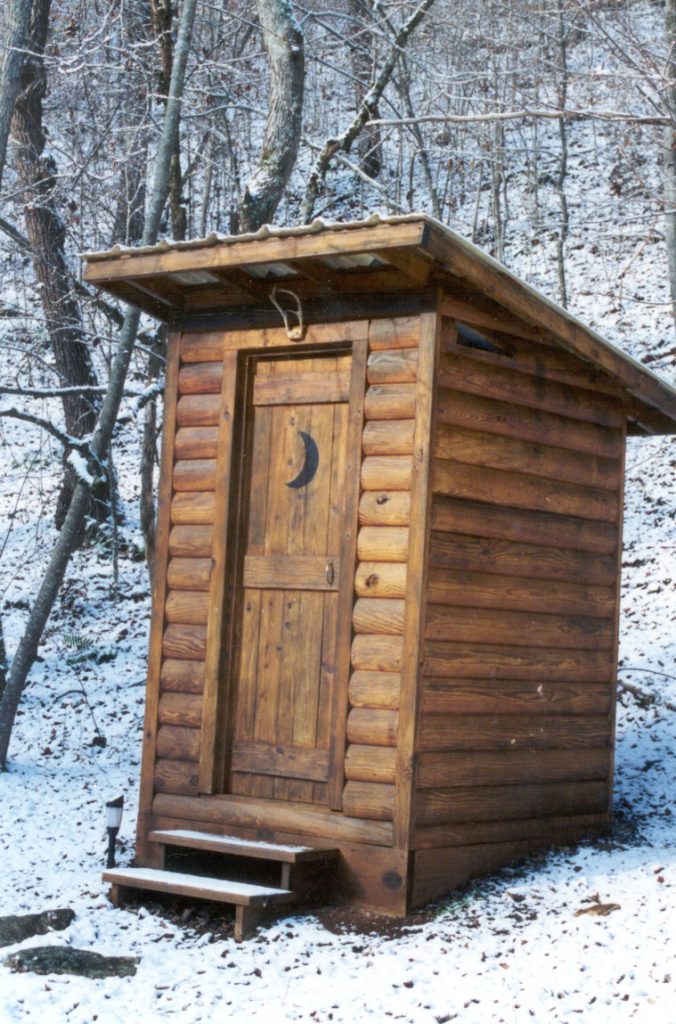
The Advantages of Using a Log-Cabin Kit Company
One of the advantages of using a kit company is once you decide how big you want your box, and how many people you want it to accommodate, a log-cabin company will send you the specifications and the cost of the materials required to carry out your dream hunting cabin plans and/or the cost to have them partially built or completely built by its crew.
If you have the company, send its crew in to build your log cabin, the crew will stay on-site and work on that cabin until it’s completely built. Due to their experience and know-how, they can build that cabin much faster than you and your crew, but that time frame still depends on the weather and the size of the cabin you are building.
Rich memories and nostalgia are associated with having a log hunting cabin today like early hunters and settlers had during the founding of this country. Today you can have much or all of the work of building a log cabin done for you, or you can build it yourself.
Build a Solid Foundation
As founder and president of MDH Foundation in Daphne, Al, Mike Hayes has built and repaired the foundations of numerous hunting cabins ranging from simple to enormous. One of the points you must consider is the soil in a given area.
“Many hunting cabins are built on land with poor soils that are prone to shifting. The solution for some is a lot of time spent hauling out the poor soil and hauling in better dirt. One of the ways you can save a lot of time and money in building your foundation is through the use of a Helical Piering System,” Hayes said. “This system will get down to the stable soil and allow for the hunting cabin to be placed on these piers, saving you a lot of time and money in the process.”
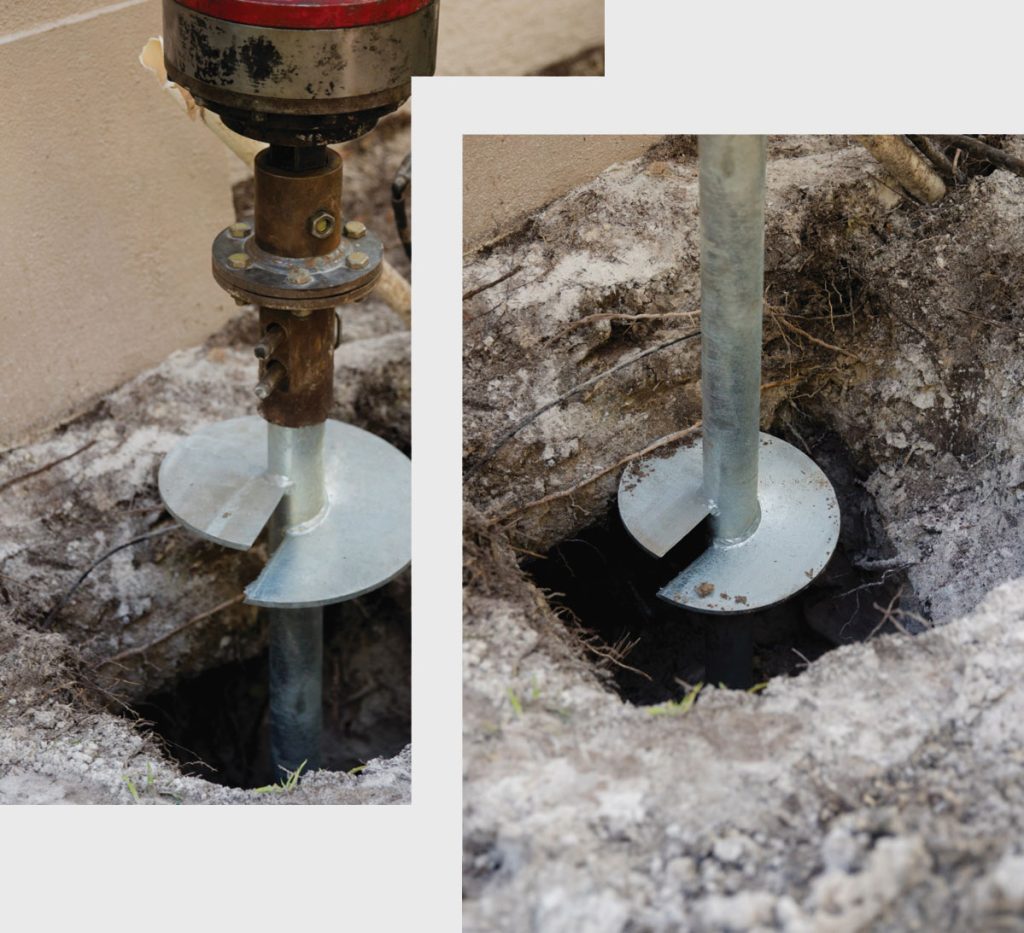
A lot of people who are interested in a simple hunting cabin are buying a piece of property that already has an old cabin in place. It’s often questioned whether one should replace the cabin all together or repair what is there. Hayes almost always recommends repairing an existing foundation over building a new one.
“If you have sagging joists on an existing hunting cabin, you can use our SmartJack® System to sure up those joists. This can also be used in conjunction with the Helical Piering system where it is needed.”
Why Put a Metal Roof on Your Log Cabin?
More and more individuals building log cabins today are opting for metal roofs. To find out why, I talked with the folks at Dixie Building Supply, who referred us to Billy Vallas, Chief of Operations at Baker Metal Works & Supply, an authority on metal roofs.
When asked why his company recommended people building log cabins to put metal roofs on them, Vallas pointed out that metal roofs are strong, have a long lifespan, hold up to high winds and are fire-resistant.
“Metal roofing is very durable and has a very-long lifespan. A metal roof installed correctly can last from 50-75 years, whereas a shingle roof has a lifespan of 10-20 years,” Vallas said. “Metal roofing also can withstand winds of up to 180 mph, which is why it’s so popular in coastal areas where hurricanes are prevalent. It’s also fire-resistant and won’t ignite in a wildfire or due to a lightning strike.
Vallas explained that metal roofing can be made out of many different materials. Primarily, at least in the South, it’s a combination of steel with a coating made of aluminum, zinc and silicon. Aluminum makes up the majority of the coating, which means it’s much more likely to withstand scratches and be more resistant to corrosion. A customer also can select more-expensive metal roofing made of copper and aluminum.
Price and Installment Considerations
“The initial upfront cost for a metal roof will be higher than a shingle roof. First, you’re installing a higher-end product, and you’ll need a more-specialized crew to put it on correctly,” Vallas said. “Depending on the final product chosen, the metal roof may cost 25% more than a shingle roof. But with a shingle roof, every 10-20 years, you’ll have tear-off costs and have to buy materials for another roof. So, actually over the life of a home, a metal roof is less expensive”
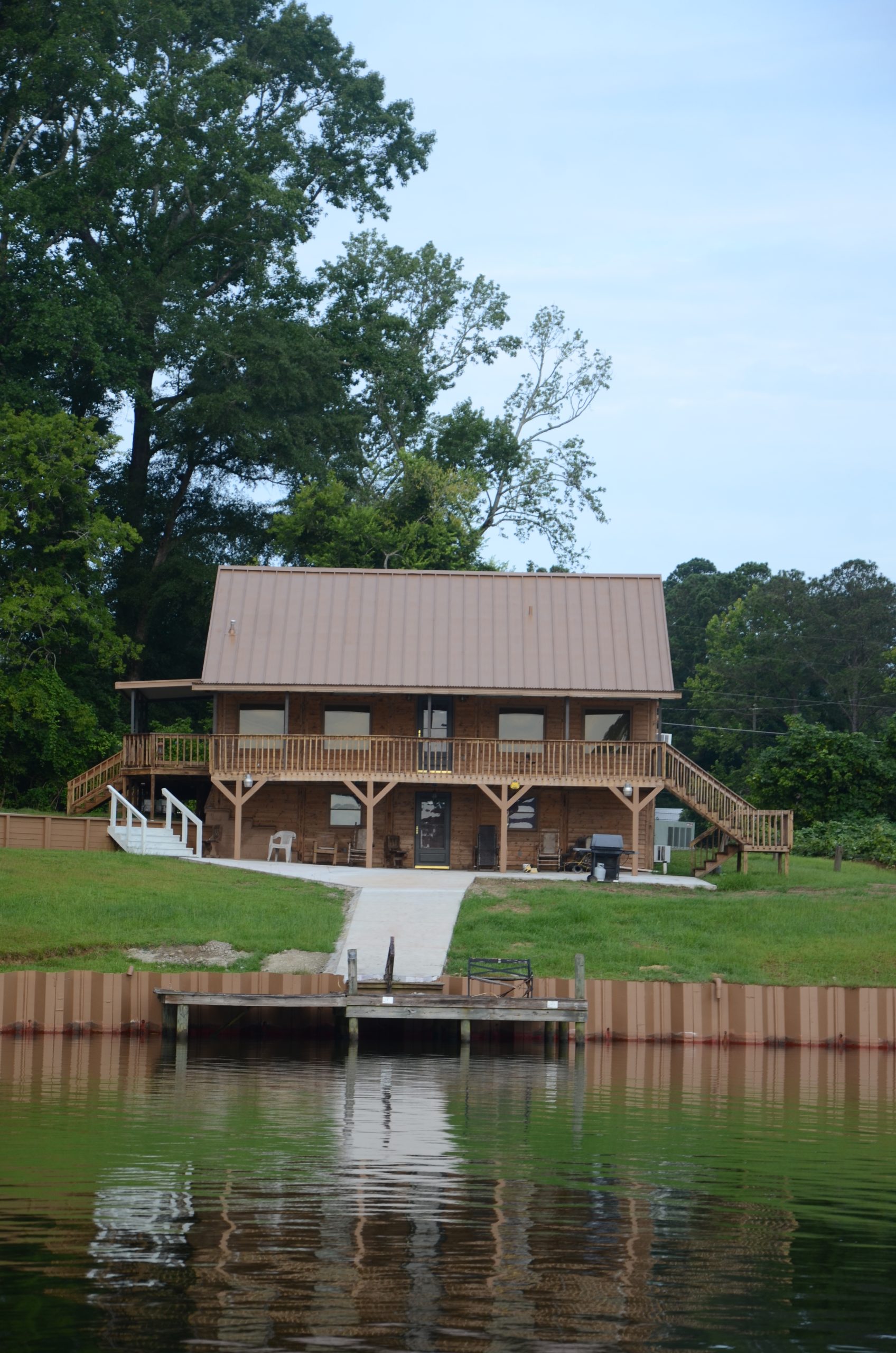
“Since metal roofing is a more-specialized installation, the person installing it must have knowledge of how to install it correctly. Some metal-roof projects, depending on the complexity, can take twice as long to install as a shingle roof. The average home probably will require one week to 10 days for proper installation,” Vallas noted.
Then there is energy efficiency
“A metal roof will keep your home cool in the summer and warm in the winter. It reflects the sun, whereas shingles absorb the sun, making your air conditioning work harder and driving-up your energy bills,” Valla said. “Metal roofing also is available in many profiles and colors. We’re all concerned too about the environment, and metal roofing generally is made from recycled products that leave a smaller carbon footprint than shingles.”
Financing Your DIY Hunting Cabin Plans
Taylor Hart, the branch manager of First South Farm Credit, explained that First South Farm Credit is a rural lender. If you decide to build a log home or a DIY cabin on your property, Hart reports that First South loans money for those kinds of property improvements.
“Absolutely. We can make construction loans and turn those loans into long-term loans, if need be. Some landowners are building secondary homes, hunting cabins or lodges, and others are wanting to put their primary residences on 20-30 acres,” Hart said. “First South can make loans for anything a landowner wants to do to develop his property. If you’re playing in the dirt, we want to be in there with you, as long as you’re improving the value of the dirt, which is the collateral of the loan.”
Check out J. Wayne Fears’ book, “How to Build Your Dream Cabin in the Woods”
Today John has about 100 books available on Amazon in Kindle, print and Audible versions, and you can find those at this link www.amazon.com/author/johnephillips.

